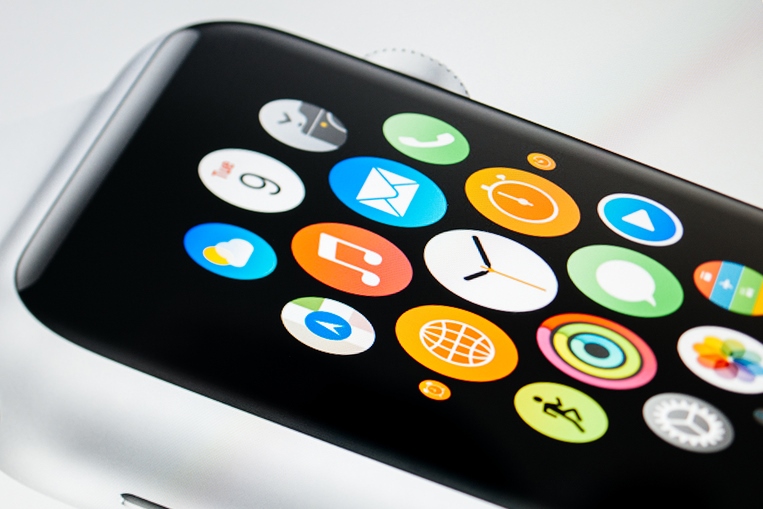Wearables are all around us. In recent years we have seen the launch of a fresh batch of wearable products, ranging from wristbands to glasses to watches from corporate heavyweights including Barclaycard, Google, Samsung and Sony to name a few. Despite this, the wearable industry is stalling and struggling to take off, with the UK market estimated to be worth only £313.6m last year.[1] Wearables are yet to be proven as indispensable and many of the current crop lose their appeal within months, retreating with a whimper to the desk drawer. One third of consumers who purchase a wearable stop using it after six months.[2]
I have been following the wearables industry closely ever since I began working on the release of a payment wristband for one of BearingPoint’s clients. Working in wearables on the front line of technology and corporate innovation has been a fantastic experience. But whilst I am a devout advocate of the wearable proposition, I cannot help but agree that the biggest trend in the wearables industry is taking them off. Let me explain where I think the industry is and what we will start to see more of in the future that will enhance the value proposition.
The Current Market: The fundamental issue with the wearables market is that the products are not really solving a problem. Products are more gimmick than desirable and there is still a strong focus towards fitness features or smartphone notifications. Whilst these products have been successful to an extent, these market areas are still quite niche. True fitness fanatics are yet to be convinced that wearable activity trackers are a direct replacement for GPS based sports watches and there are mobile apps that serve the same purpose for a fraction of the price (and my phone vibrates when I receive an SMS so I do not really need a wearable to tell me that either).
Wearables – a fragmented market: All of the above represent products that are single purpose with single use cases and have had relatively limited success. The market is quite fragmented with single purpose products and consumers don’t want to have their body covered in various wearable products (and are unlikely to be able to afford to either). On the subject of fashion, wearables have been classed as more ‘geek than chic’ whilst some other products in the market lack sophistication. A few fashion conscious startups (e.g. Altruis, Ringly and Cuff) have attempted to add design flair to wearable products but are unproven.
Wearables – the opportunities: So here is where the opportunity lies in the market, through the development of multipurpose wearables that are more likely to appeal to the mass market, (encompassing activity tracking, notifications and payments as a starter). Multipurpose will make wearables less of a niche market product and will provide users with a genuine desire to buy a wearable, rather than making a conscious choice to be an early adopter. In fact Gartner predicts that global wearable fitness device shipments will drop from 70.2m (2014) to 68.1m (2015) due to ‘an overlap in functionality between smart wristbands, other wearable fitness monitors and smartwatches’.[3] On the fashion front, opportunities exist for partnerships between technology and luxury/lifestyle brands with technology companies providing the ingredient (e.g. a contactless payments chip) that can be incorporated into designer goods. Likewise, combining the multipurpose and partnership themes leads to further potential to add access (gym, office or event) or loyalty (all of your loyalty cards on your wearable).
Wearable technology has the potential to change society. The technology is in place but the need and multiple use cases for this technology coupled with a sleek and fashionable design are not yet. Smartphones didn’t really take off until the market was graced with the iPhone, a well designed device that put a marker on aesthetics in the smartphone industry. Whether the Apple Watch will have a similar watershed effect for wearables is yet to be seen. But what is for sure is that if wearables provide these missing ingredients, this year could well be the year we see wearables go from niche to mass market. The market is wide open. Watch this space.
Summary:
- Wearable products are more of a gimmick than a genuinely desirable product and currently focus on niche areas
- The wearables market is fragmented and many products have only a single purpose (e.g. activity tracking, notifications) and are seen as more ‘geek than chic’
- To increase desirability, wearables need to be multipurpose and fashionable
- Potential opportunities exist for technology companies to incorporate their product in partner products as an ingredient
- Wearables are here to stay. There is a significant opportunity to develop multipurpose and well designed products that will appeal to the mass market, similar to the way that the iPhone revolutionised the smartphone market
Written by Alexandre Piper, Consultant at BearingPoint for the Young MCA Update. Article selected as part of the MCA Year of Digital.
[1] http://www.samsung.com/uk/news/local/wearable-tech-market-predicted-to-be-worth-104-7-million-pounds-to-uk-retailers-this-christmas
[2] http://endeavourpartners.net/wearables-making-headlines/
[3] http://www.gartner.com/newsroom/id/2913318



